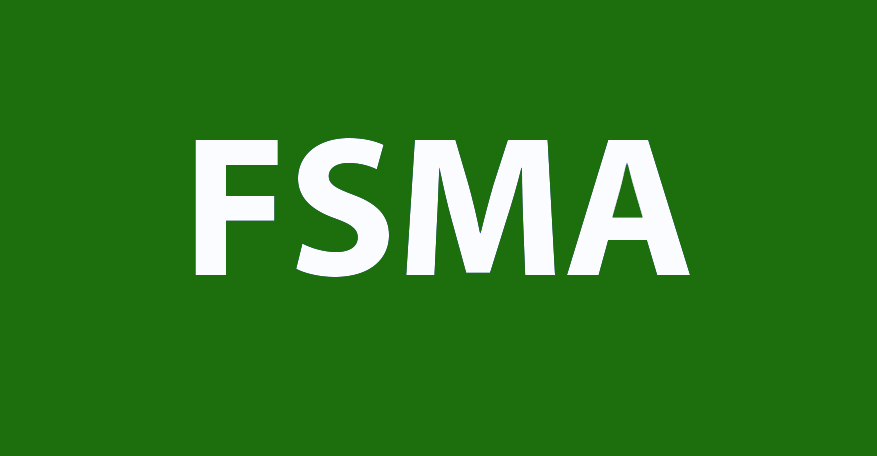Are You Ready for the Produce Rule? You Just Might Be

At last the new Produce Rule is out, issued on November 13, 2015. For the first time in FDA history, the rule establishes a science-based minimum standard for growing, harvesting, packing and holding of fruits and vegetables grown for human consumption. The rule can be found in Part 112 of the Code of Federal Regulations (CFR). It applies to both domestic and imported produce.
The new rule provides assurance that produce on the market is not adulterated under the Food, Drug, and Cosmetic Act. It will accomplish this by establishing procedures, processes and practices that are known to minimize the risks of serious adverse health consequences or death to humans, and to prevent the introduction of known biological hazards into and or on produce.
The definition for a farm, covered under the rule, includes two kinds of farming operations, primary production farm and secondary activities farm. The primary production farm operates under one management, and the secondary activities farm is an operation. Where as the primary production farm owns, or jointly owns, a majority of interest in the secondary activities farm.
For the most part, the new mandated FDA Produce Rules, mirror what farmers, packers and others in the farm business have been doing all along. For years now, produce buyers have required some kind of written guarantee from their suppliers such as a third-party audit certificate showing that the supplying farm or packing shed is complying with the farm food safety standards. Most farms and packing sheds have already undergone, if not one, but perhaps two or more third-party audits such as a Good Agricultural Practices (GAP) or, one of the Harmonized GAP audits, or a Good Manufacturing Practices (GMP) audit, or one of the Global Food Safety Initiative (GFSI) audits such as GlobalGAP, Safe Quality Foods (SQF) or BRC Global Standards (BRC).
This means that those covered under the Produce Rule for growing, harvesting, packing and holding of fruits and vegetables grown for human consumption and have received a third-party audit should have no trouble achieving compliance with the new Produce Rule.
The above-mentioned third-party standards cover most aspects of the key requirements of the Produce Rule regarding agricultural water, biological soil amendments, domesticated and wild animals, worker training, health and hygiene, and equipment, tools, and buildings.
However, some key requirements of the new rule not noted in existing third-party standards include:
- Water testing of untreated water, sample collection and survey creation for agricultural water.
- Microbial standard limits for detectable amounts of microorganisms to include Listeria monocytogenes, Salmonella species, and E. coli 0157:H7 for the treatment process of soil amendments, including manure.
- The final Produce Rule includes requirements to help prevent the contamination of sprouts. For example, requires testing of spent sprout irrigation water for pathogens and requires environmental monitoring for Listeria. Documentation or letters from seed and/or bean supplier for the prior treatment of seed and beans are acceptable.
- The requirements of Domesticated and Wild Animals relies more on monitoring and assessing conditions during growing season. If you find evidence of potential contamination like animal excreta, you must take action and evaluate whether produce can be harvested or if there is a likelihood of contamination. The produce must not be harvested.
This rule does not apply to:
- Farms that have an average annual value of produce sold during the previous three year period of $25,000/yea
- Produce for personal or on-the farm consumption
- If the produce is on the list of “rarely consumed raw commodities” such as sweet potatoes and
- A food grain such as wheat or oats
The rule provides also for exemptions:
- Produce that will receive commercial processing (kill-step) to reduce microorganisms of public health concerns.
- Provides a qualified exemption and modification requirement for farms that meet certain requirements based on monetary value and direct sales to qualified end users such as consumers or restaurants. The farm must also meet associated modified requirements like establishing and maintaining certain documentation.
Under certain conditions the FDA may withdraw a farm’s qualified exemption.
The rule focuses on sources of produce contamination found in the past: Agricultural water, biological soil amendments, domesticated and wild animals, worker training, health and hygiene, and equipment, tools and buildings.
This rule and others under FSMA such as Preventive Controls for Human Food, Preventive Controls for Animal Food, and the Foreign Supplier Verification Program are a long overdue yet great achievement for FDA. The agency now shifts its gear into focusing on preventing food safety problems instead of reacting to food safety outbreaks.
FDA estimates that about 348,000 illnesses per year will be prevented by the implementation of this rule.
The compliance dates for the new rule are staggered and based on business size.